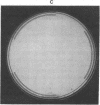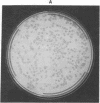Abstract
Bacillus subtilis strain QB928, a tryptophan-auxotroph, was serially mutated to yield strain HR15. For QB928, tryptophan functioned as a competent amino acid and 4-fluorotryptophan as merely an inferior analogue. For HR15, these roles were reversed. The tryptophan/4-fluorotryptophan growth ratio decreased by a factor of 2 X 10(4) in the transition from QB928 to HR15.
Full text
PDF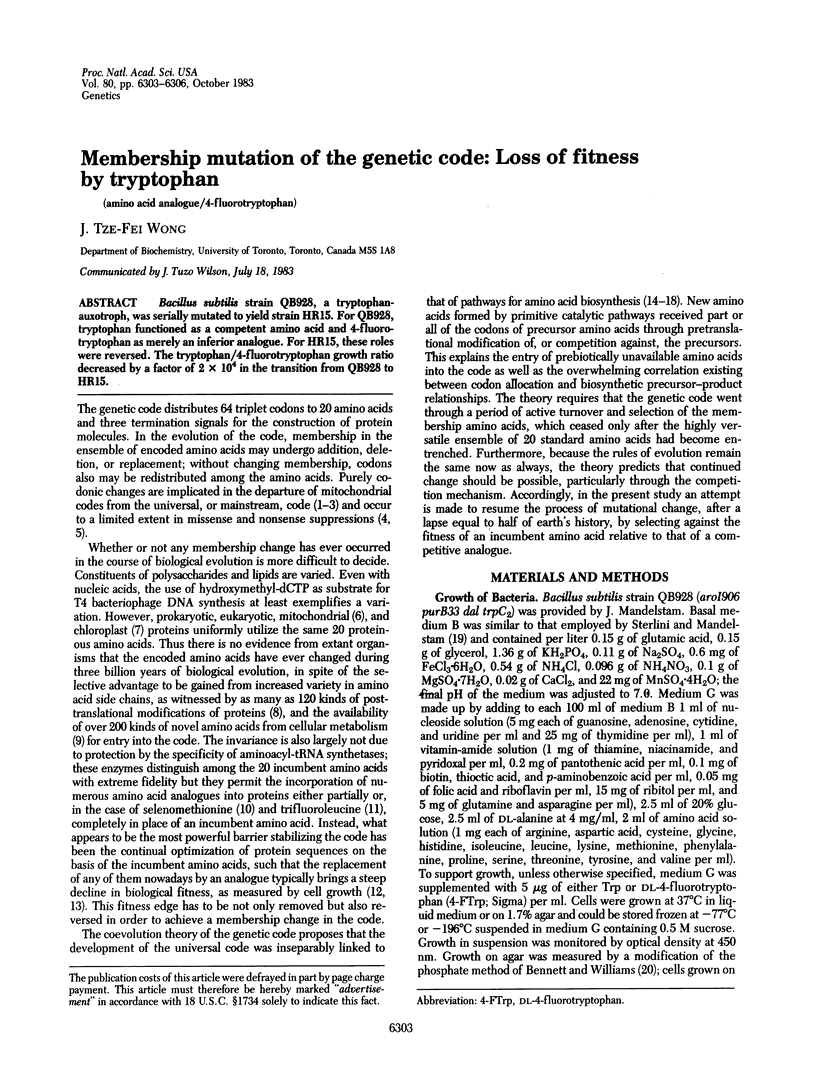
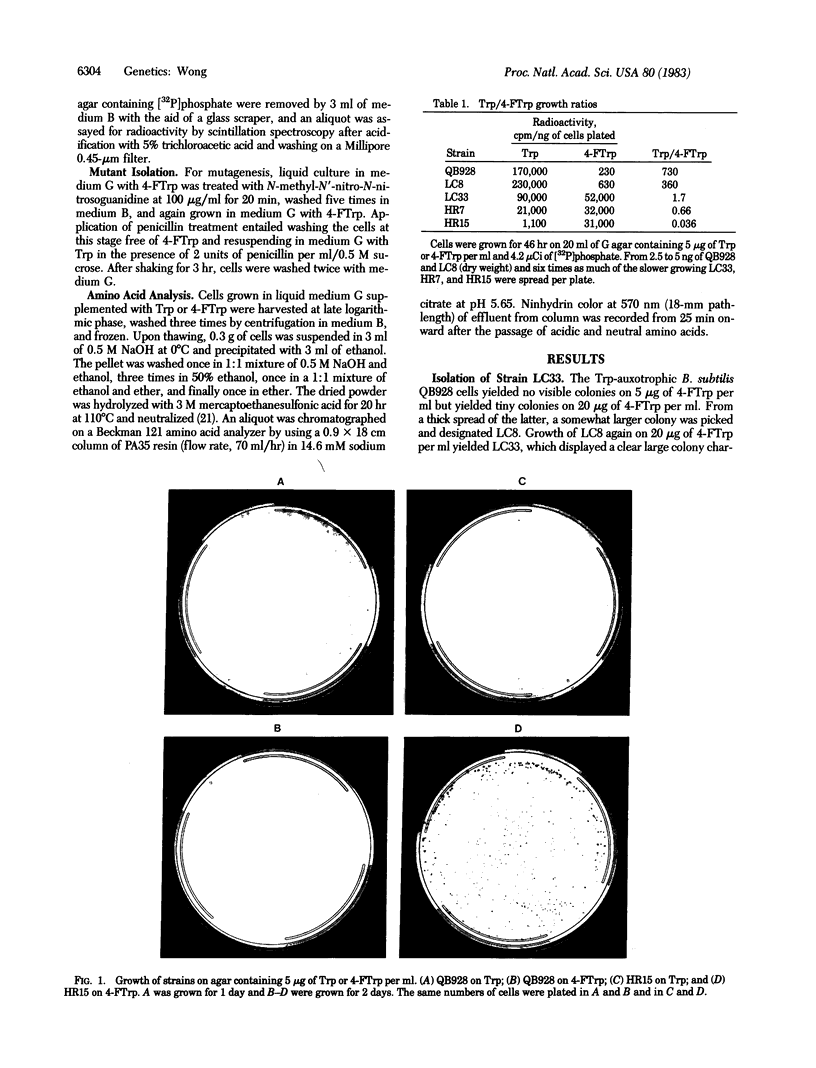

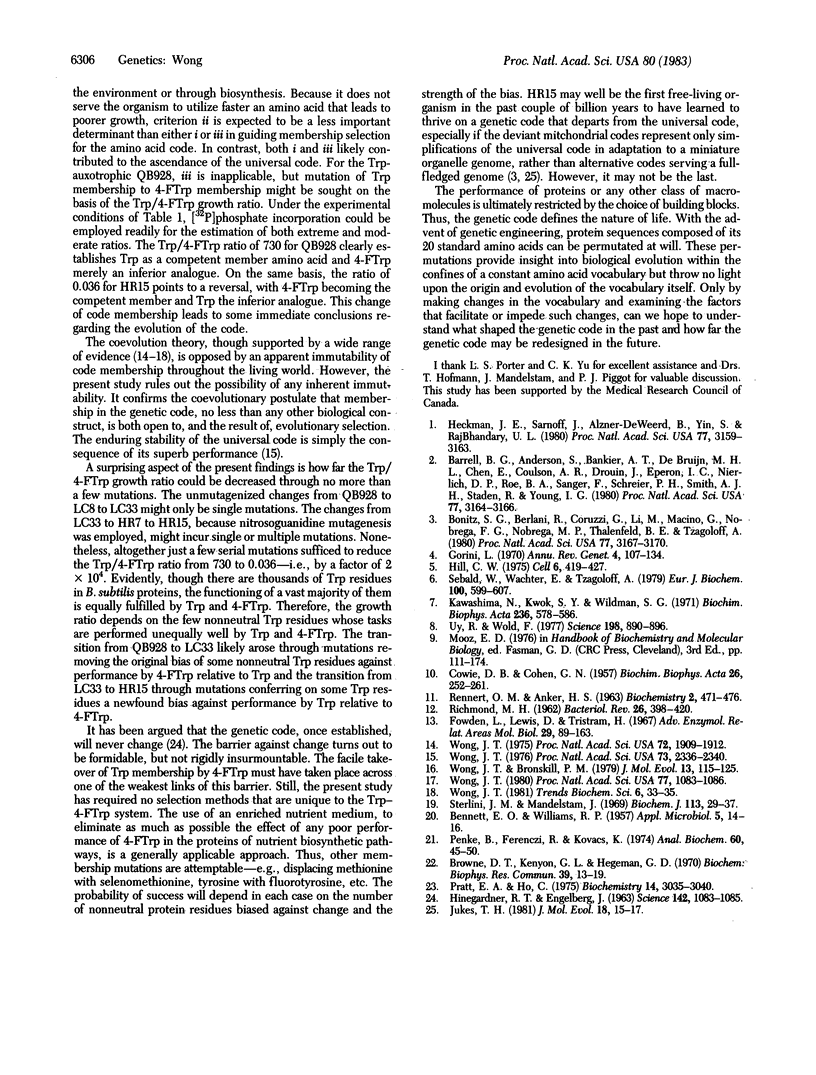
Images in this article
Selected References
These references are in PubMed. This may not be the complete list of references from this article.
- BENNETT E. O., WILLIAMS R. P. A comparison of methods for determining bacterial mass with particular emphasis upon the use of total phosphorus. Appl Microbiol. 1957 Jan;5(1):14–16. doi: 10.1128/am.5.1.14-16.1957. [DOI] [PMC free article] [PubMed] [Google Scholar]
- Barrell B. G., Anderson S., Bankier A. T., de Bruijn M. H., Chen E., Coulson A. R., Drouin J., Eperon I. C., Nierlich D. P., Roe B. A. Different pattern of codon recognition by mammalian mitochondrial tRNAs. Proc Natl Acad Sci U S A. 1980 Jun;77(6):3164–3166. doi: 10.1073/pnas.77.6.3164. [DOI] [PMC free article] [PubMed] [Google Scholar]
- Bonitz S. G., Berlani R., Coruzzi G., Li M., Macino G., Nobrega F. G., Nobrega M. P., Thalenfeld B. E., Tzagoloff A. Codon recognition rules in yeast mitochondria. Proc Natl Acad Sci U S A. 1980 Jun;77(6):3167–3170. doi: 10.1073/pnas.77.6.3167. [DOI] [PMC free article] [PubMed] [Google Scholar]
- Browne D. R., Kenyon G. L., Hegeman G. D. Incorporation of monoflurotryptophans into protein during the growth of Escherichia coli. Biochem Biophys Res Commun. 1970 Apr 8;39(1):13–19. doi: 10.1016/0006-291x(70)90750-3. [DOI] [PubMed] [Google Scholar]
- COWIE D. B., COHEN G. N. Biosynthesis by Escherichia coli of active altered proteins containing selenium instead of sulfur. Biochim Biophys Acta. 1957 Nov;26(2):252–261. doi: 10.1016/0006-3002(57)90003-3. [DOI] [PubMed] [Google Scholar]
- Fowden L., Lewis D., Tristram H. Toxic amino acids: their action as antimetabolites. Adv Enzymol Relat Areas Mol Biol. 1967;29:89–163. doi: 10.1002/9780470122747.ch3. [DOI] [PubMed] [Google Scholar]
- Gorini L. Informational suppression. Annu Rev Genet. 1970;4:107–134. doi: 10.1146/annurev.ge.04.120170.000543. [DOI] [PubMed] [Google Scholar]
- HINEGARDNER R. T., ENGELBERG J. RATIONALE FOR A UNIVERSAL GENETIC CODE. Science. 1963 Nov 22;142(3595):1083–1085. doi: 10.1126/science.142.3595.1083. [DOI] [PubMed] [Google Scholar]
- Heckman J. E., Sarnoff J., Alzner-DeWeerd B., Yin S., RajBhandary U. L. Novel features in the genetic code and codon reading patterns in Neurospora crassa mitochondria based on sequences of six mitochondrial tRNAs. Proc Natl Acad Sci U S A. 1980 Jun;77(6):3159–3163. doi: 10.1073/pnas.77.6.3159. [DOI] [PMC free article] [PubMed] [Google Scholar]
- Jukes T. H. Amino acid codes in mitochondria as possible clues to primitive codes. J Mol Evol. 1981;18(1):15–17. doi: 10.1007/BF01733206. [DOI] [PubMed] [Google Scholar]
- Kawashima N., Kwok S. Y., Wildman S. G. Studies on fraction-I protein. 3. Comparison of the primary structure of the large and small subunits obtained from five species of Nicotiana. Biochim Biophys Acta. 1971 Jun 29;236(3):578–586. doi: 10.1016/0005-2795(71)90242-x. [DOI] [PubMed] [Google Scholar]
- Penke B., Ferenczi R., Kovács K. A new acid hydrolysis method for determining tryptophan in peptides and proteins. Anal Biochem. 1974 Jul;60(1):45–50. doi: 10.1016/0003-2697(74)90129-8. [DOI] [PubMed] [Google Scholar]
- Pratt E. A., Ho C. Incorporation of fluorotryptophans into proteins of escherichia coli. Biochemistry. 1975 Jul;14(13):3035–3040. doi: 10.1021/bi00684a037. [DOI] [PubMed] [Google Scholar]
- RENNERT O. M., ANKER H. S. ON THE INCORPORATION OF 5',5',5'-TRIFLUOROLEUCINE INTO PROTEINS OF E. COLI. Biochemistry. 1963 May-Jun;2:471–476. doi: 10.1021/bi00903a013. [DOI] [PubMed] [Google Scholar]
- RICHMOND M. H. The effect of amino acid analogues on growth and protein synthesis in microorganisms. Bacteriol Rev. 1962 Dec;26:398–420. doi: 10.1128/br.26.4.398-420.1962. [DOI] [PMC free article] [PubMed] [Google Scholar]
- Sebald W., Wachter E., Tzagoloff A. Identification of amino acid substitutions in the dicyclohexylcarbodiimide-binding subunit of the mitochondrial ATPase complex from oligomycin-resistant mutants of Saccharomyces cerevisiae. Eur J Biochem. 1979 Oct 15;100(2):599–607. doi: 10.1111/j.1432-1033.1979.tb04207.x. [DOI] [PubMed] [Google Scholar]
- Sterlini J. M., Mandelstam J. Commitment to sporulation in Bacillus subtilis and its relationship to development of actinomycin resistance. Biochem J. 1969 Jun;113(1):29–37. doi: 10.1042/bj1130029. [DOI] [PMC free article] [PubMed] [Google Scholar]
- Uy R., Wold F. Posttranslational covalent modification of proteins. Science. 1977 Dec 2;198(4320):890–896. doi: 10.1126/science.337487. [DOI] [PubMed] [Google Scholar]
- Wong J. T. A co-evolution theory of the genetic code. Proc Natl Acad Sci U S A. 1975 May;72(5):1909–1912. doi: 10.1073/pnas.72.5.1909. [DOI] [PMC free article] [PubMed] [Google Scholar]
- Wong J. T., Bronskill P. M. Inadequacy of prebiotic synthesis as origin of proteinous amino acids. J Mol Evol. 1979 Jul 18;13(2):115–125. doi: 10.1007/BF01732867. [DOI] [PubMed] [Google Scholar]
- Wong J. T. Role of minimization of chemical distances between amino acids in the evolution of the genetic code. Proc Natl Acad Sci U S A. 1980 Feb;77(2):1083–1086. doi: 10.1073/pnas.77.2.1083. [DOI] [PMC free article] [PubMed] [Google Scholar]
- Wong J. T. The evolution of a universal genetic code. Proc Natl Acad Sci U S A. 1976 Jul;73(7):2336–2340. doi: 10.1073/pnas.73.7.2336. [DOI] [PMC free article] [PubMed] [Google Scholar]



